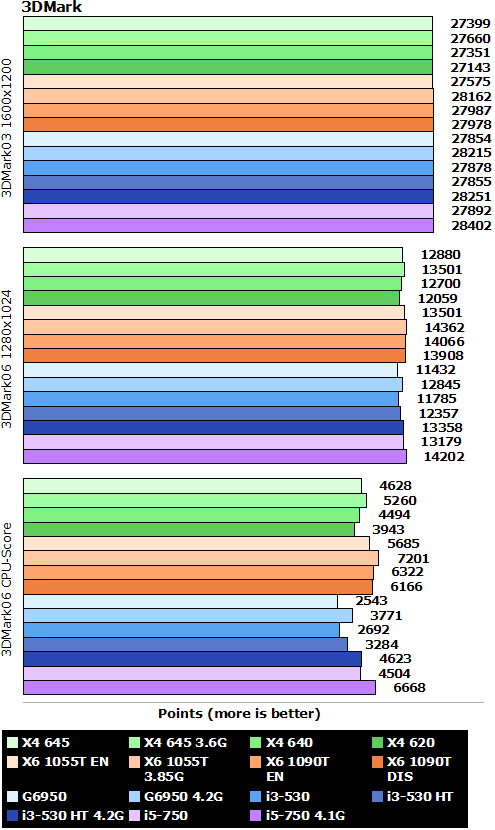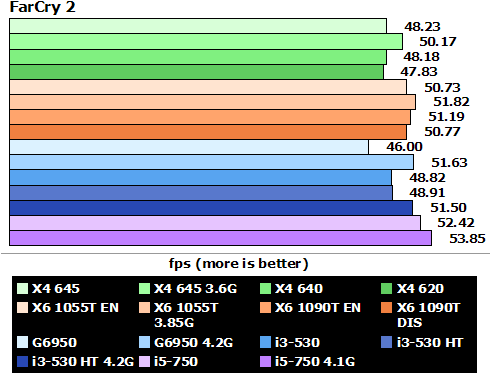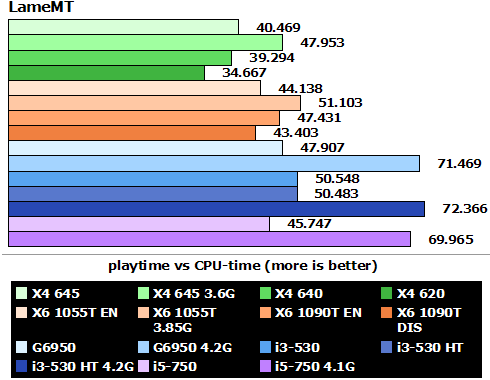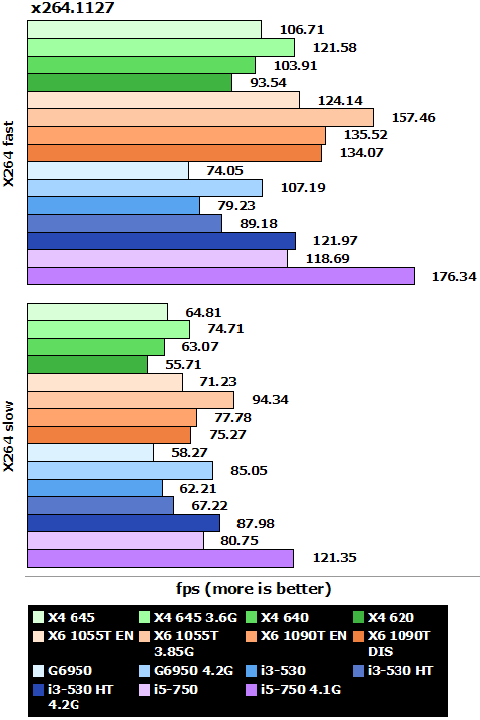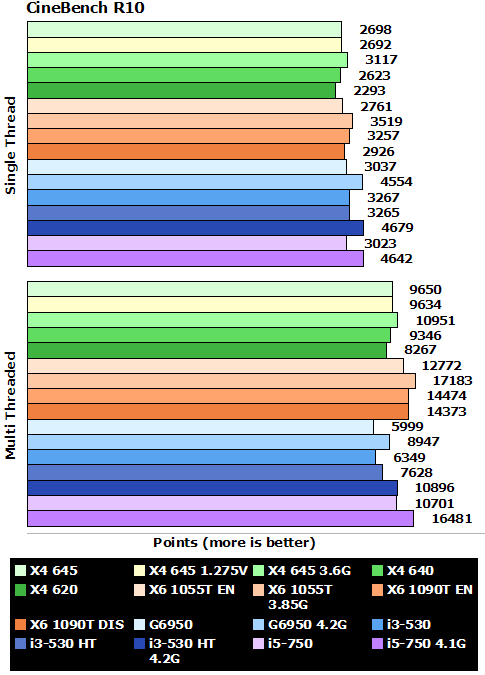Index


Review: Slight speed pump for the Athlons
Last month, AMD released several CPUs with a slight speed-bump which also included the Athlon II X4 645. With current 3.1GHz it's the top of the L3 cacheless Propus line. All the other specifications stayed the same, with 4x256 L2 Cache, 64kB Cache for data and instructions per core and a TDP of 95W. While the first Propus Athlon II X4 620 was fired with 1.40V, thankfully AMD reduced the VCore to 1.35V at load and 1.00V in Cool'n'Quiet mode. Let's see how the CPU does.
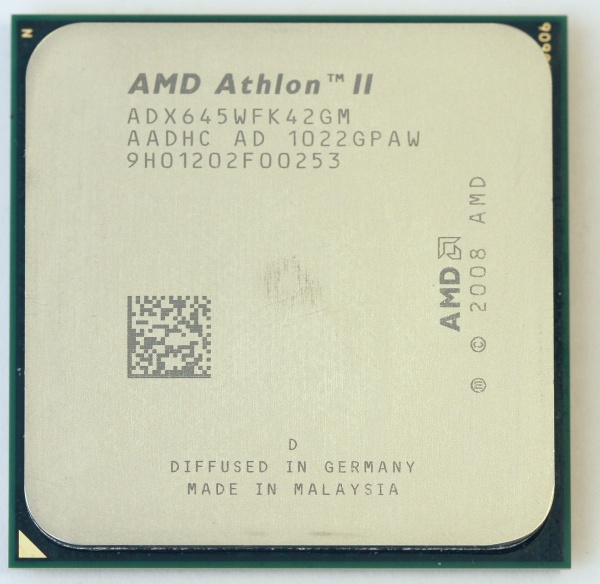
Testbed:
Motherboard:
ASRock 890GX Extreme 3 (provided byASRock)
AMD 890GX/SB850
MSI P55-GD65 (provided by MSI)
Intel P55
ASRock H55M Pro (provided by ASRock)
Intel H55
CPU:
Intel Pentium G6950, Core i3-530 (provided by Mindfactory)
Intel Core i5-750 (provided by Intel)
AMD Athlon II X4 620/645/X6 1090T (provided by AMD)
AMD Phenom II X6 1055T 95W (provided by ASRock)
CPU-Cooler:
Scythe Grand Kama Cross (provided by Scythe-Europe) for AMD and Intel 1156
Thermalright Ultra 120 eXtreme 1366 (provided by Thermalright) for Intel 1366
Memory:
G.Skill Eco 4GB Kit PC3-12800 (provided by G.Skill)
1067MHz CL7-7-7-20 CR1T 1.35V for Athlon II X2, Pentium G6950, i7-975
1333MHz CL7-7-7-20 CR1T 1.35V for Athlon II X4, Phenom II X4/X6, i3-530, i5-750
Graphics Card:
MSI R4850-2D1G-OC (provided byMSI)
Power supply:
PC Power & Cooling Silencer 500W (provided by PC Power & Cooling)
Hard disk:
Samsung F1 1000GB RAID-Edition (provided by Ditech)
Case fans:
SilenX iXtrema Pro 14dB(A) (provided by PC-Cooling.at)
Scythe DFS122512LS
Case:
Cooler Master Stacker 831 Lite (provided by Cooler Master)
OS:
All tests are performed with XP SP3. As 64-bit software is still not very common, we used the 32-bit version.
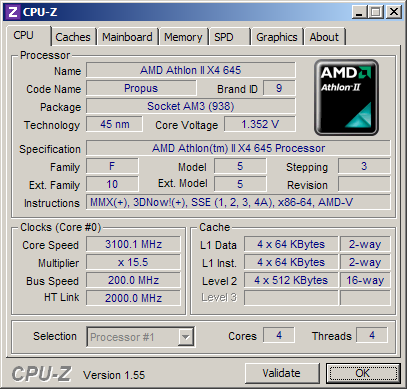
We have already stated the specs, so here the CPU-z screenshot which also stated that the new CPU is one of the new C3 steppings.
Undervoltage:
While AMD has reduced the VCore to 1.35V, we checked how much lower we could do. With our board the lowest was 1.275V with stable prime. Of course each CPU and board behaves differently, so make sure to run Prime95 to ensure stability.
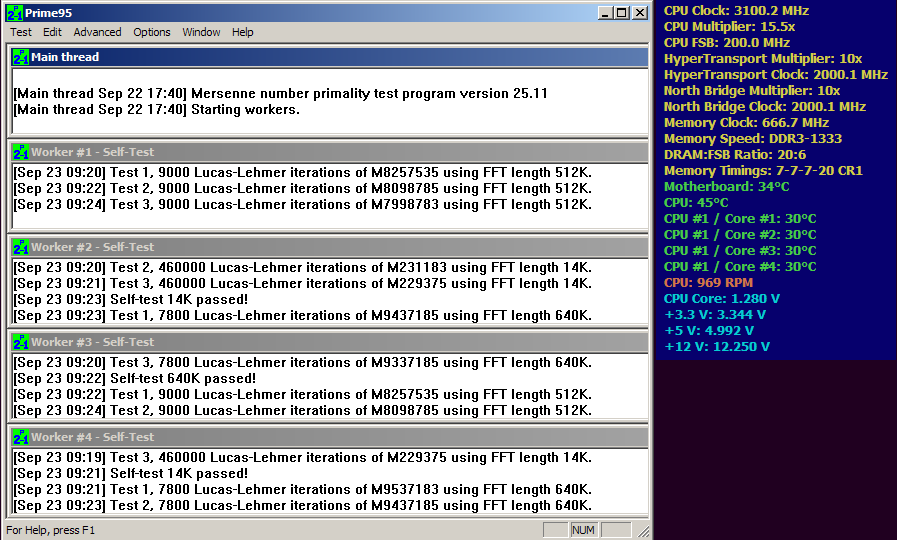
Overclocking:
First we checked how high we could go without increasing the VCore. Sadly our board did increase the VCore to ~1-38V but without this slightly increase we would not have managed a stable prime at this frequency anyways. Also, depending on CPU and board your results may vary.
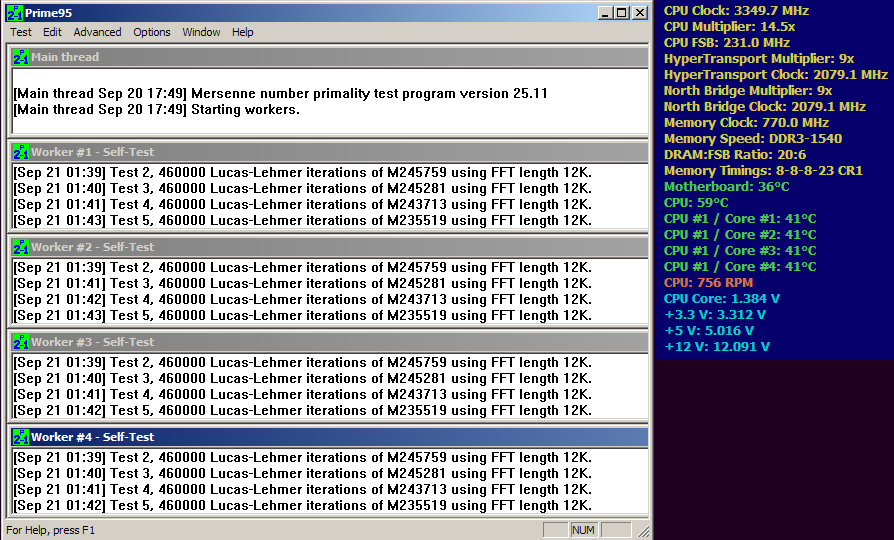
We could manage a boot with 3.80GHz but it was impossible to achieve a stable Prime95 result regardless of the used voltage.
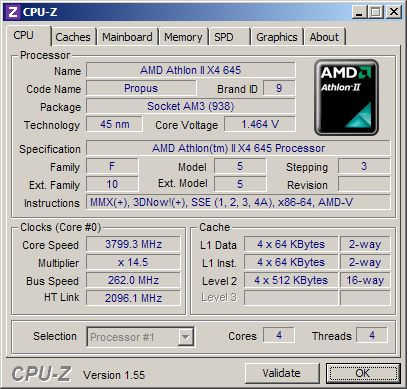
With 1.48V we could manage 3.50GHz stable:
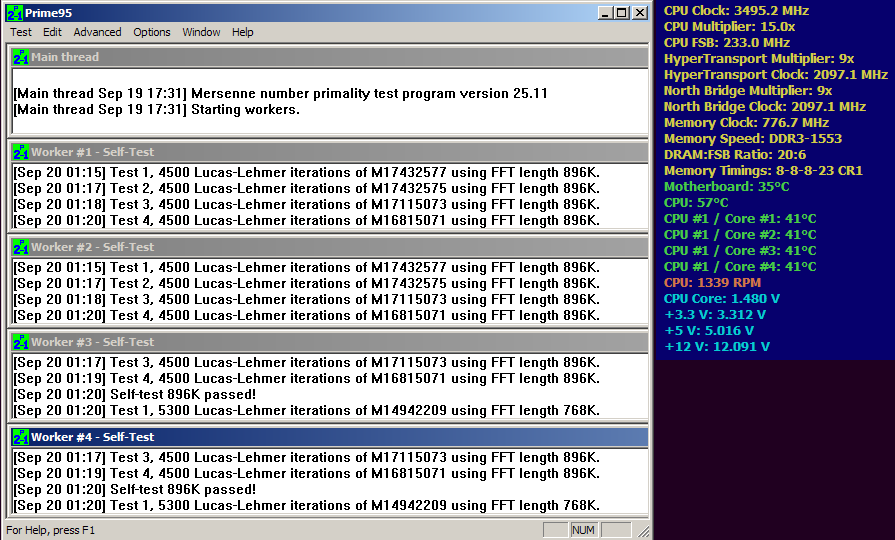
Regardsless of not beeing prime-stable for the time beeing, we tested our overclocked CPU with 3.60GHz with 1.55V.
Power-Consumption:
With the new steppings, AMD went the right path to decrease power-consumption considerable and fight Intel nearly on par.
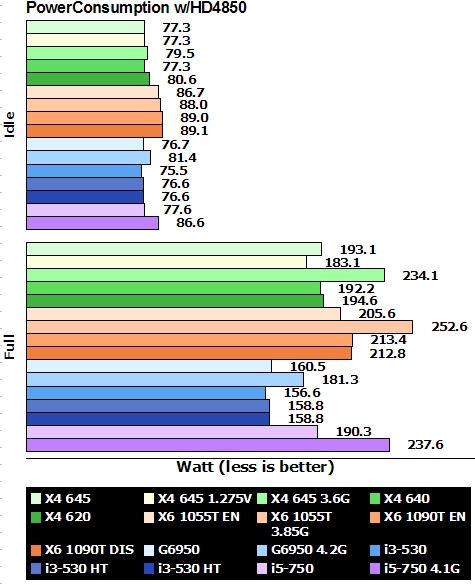
With a little less VCore on default, it does help the CPU to achieve a better performance per Watt also due to the higher clock. Not all CPUs/Chipsets have onboard graphics, so especially the i5-750 runs with our HD4850.
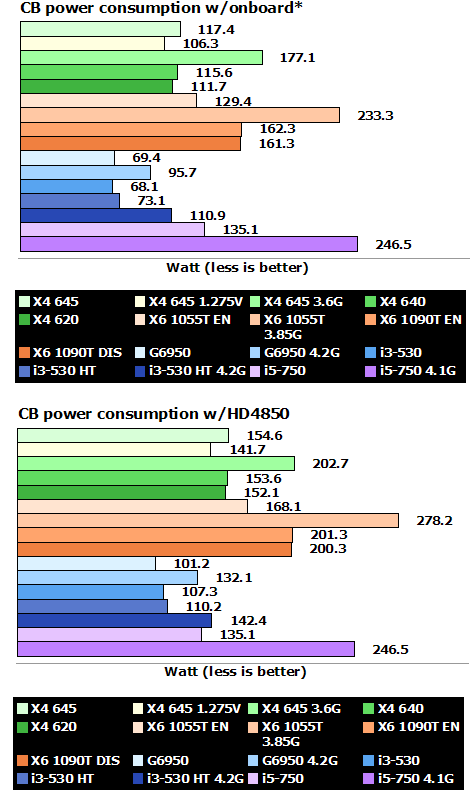
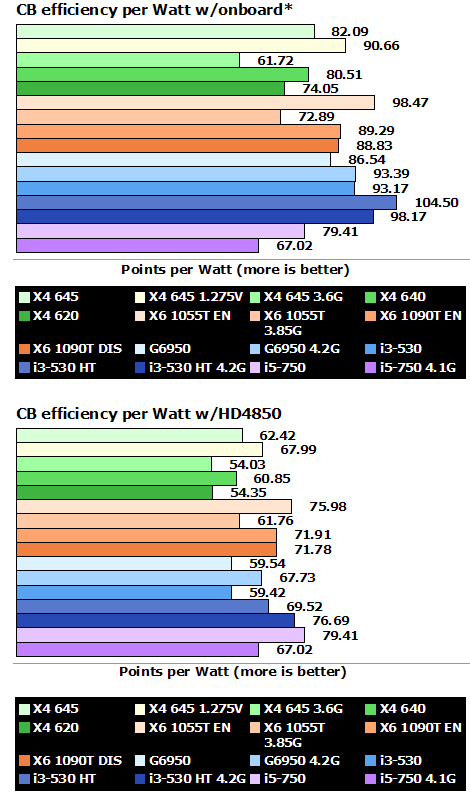
Of course the more you overclock with voltage increase the worse the efficiency will be.
Before we render a conclusion, let's have a look at the overall benchmark results:
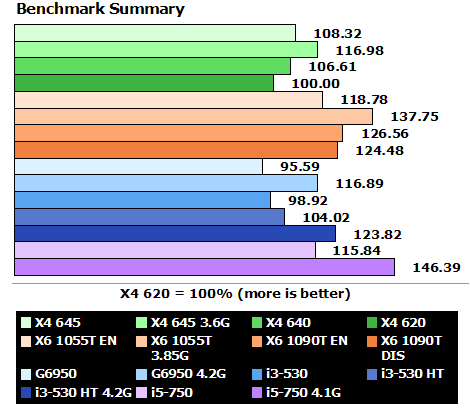
Because we had no X4 640 at hand, we just reduced the multiplier by 0.5x to get results. As you can see the X4 645 is just 1.7% faster then it's 100MHz slower counterpart.
Costs:
Luckily for us, the memory prices are down again. For €60,- you can now get a 4GB kit @1333MHz and CL7. CPU prices are quite stable, but AMD did reduced some of them two weeks ago, which also shows. We stick with our MSI 785GM-E65 board, because we think the quality is much better as the new 890GX reincarnation. On the Intel side we choose this time the MSI H55M-ED55 which droppeld from €99 to under €75 and is just about €3 more expensive as the 785GM-E65. The aged HD4850 is now available for under €80 which it makes it a bargain, compared to the HD5770 or HD6850 and will suffice for moderate gaming.
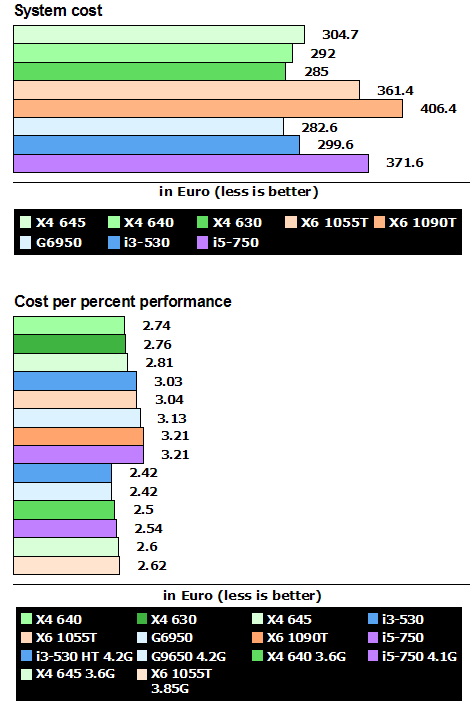
Conclusion:
We are not very fond of the 100/133MHz increases of any manufacture on any CPU. It's quite senseless to increase the frequency so little in the 3GHz age, because it does not make much difference, besides the money the companies will cash it for. AMD saucily charges you with €12/$16 for just 100MHz. Of course Intel does the same with it's CPUs and we don't think that's fair to the customers.
The Athlon II X4 645 is available for about €94.50 or around $116,- while the 100MHz slower Athlon II X4 640 costs you only €81,95 or shy of $100,-. It's quite an achievment for AMD to offer four cores at this price-range and even for gamers, this CPUs should suffice. The more powerful Phenom II X4 945 with 3GHz does cost considerable more with about €119,- or $136,-.
If you are a gamer on a budget any Athlon II X4 will do fine, even when games are sadly not optimzied on the AMD platform. A potent graphics-card will always be more crucial for good framerates then a faster CPU. The overclocking potential has not increased with the faster parts but speed is adequate. Everybody who needs more potential will go with the X6 line, everybody else does nothing wrong buying an AMD Athlon X4.
Benchmarks:
As usualy our benchmark parcours for referneces.
